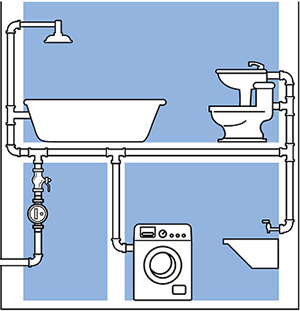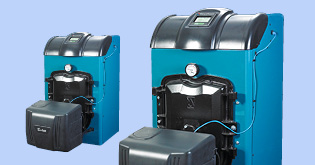- My Account:
- Sign In
- Register
- Make Payment

Plumbing basics: How your home plumbing works.

Even in the smallest house, home plumbing appears to be an often complex and confusing system of pipes. However, if you take the time to learn the logistics of residential plumbing, you will see how it works, and it’s actually quite straightforward.
There are only two significant parts to the system: (1) the water supply system for incoming clean water, and (2) the drain-waste system for removing water that’s no longer needed. This article will help you navigate through the natural, initial confusion with your home’s plumbing system and help you address future issues, whether on a DIY or professional plumber basis. At least, you will know which system is the source of your problems.
We will examine these two functions in more detail. You should become more comfortable with how your home plumbing system works.
Water supply system for intake.

This system circulates water from your main valve which, if you have city water is probably in front of your home, buried in the street. Be aware that this incoming water is under high pressure so it can get to all areas in your house. This simple picture explains the various locations your water supply system must deliver clean fresh water.
If you have city water, the fresh water enters through the “main,” an often-humongous pipe that is laid parallel to your street. Conversely, should you have a well, you’ll probably need a pump to get the water pressure you need to run your shower and get water to your faucets.
Typically, there is a shutoff valve right before your water meter and right after the meter. This makes it easy to shut down the incoming fresh water when you have a plumbing DIY project to complete.
Running water and a flushing toilet are necessary features on a daily basis, as is a hot shower, making your water intake system a vital component of your home plumbing configuration.
Your system will also need a dedicated pipe that supplies fresh water to your water heater. Tankless water heaters, once relegated to apartments and small condos (without space for traditional tank water heaters) have become popular features in newer home construction, because of their lower energy costs.
The primary concern with the water intake system is that you have clean, instant water, cold or hot, everywhere in your home when you need it. This includes your kitchen, bathroom(s), tub, toilet, and outside faucets. The fresh water in your home should have sufficient pressure to make washups, showers, toilet flushing, and food object washing, to function properly.
Drain-waste water system.
.jpg?sfvrsn=ae8a663_3)
After your house’s water has flowed through and around your home, it becomes waste water, which must be eliminated from the residence. While sufficient water pressure is the job of the water intake system, gravity rules the drain vent system.
You will notice all the pipes charged with this responsibility are angled downward to allow gravity to transport the waste water out of your home. You will note that your home’s drain-waste system is more complex than the intake series of pipes.
This system requires numerous vents, traps, and other clean out features to help gravity do its job. If you look at your roof, you’ll see several vent pipes sticking out above your roof shingles. You’ll also notice a “trap” (shaped like a sideways “P”) under every sink in your house. These are called These “traps” help you in the event you drop something solid down the drain, such as a ring or earing.
Notice the roof vent noted on this simple drawing of the waste-drain system in your home below. Once the waste pipe is outside your home it transports the waste water to your sewer or septic tank.
Most waste-drain systems include a “clean out plug.” These clean out plugs are designed so you or your plumber can remove the most stubborn waste material clogs.
You will note that the drain-waste pipes tend to be “fatter” than your water intake pipes. Since they are charged with carrying away waste water and other waste material, they are more efficient by being larger.
Older houses have a minimum of shutoff valves, but the experts believe there should be many more for each fixture and appliance so DIYers and plumbers could isolate problems without having to shut off the main.
Basic plumbing summary and overview.
All the pipe systems fall into one of the two main categories (water intake or waste water out), regardless of the number of kitchens or bathrooms in a home. The drains should be in close proximity to the vent systems, as they need to be close (per local construction regulations). When you try to fix any problems, be sure to turn off the water supply.
If you are shutoff “short,” as many older homes are, shut down the water supply at the main. This way you’ll avoid a nasty surprise, since incoming water pressure typically is at 50 to 60 psi, which will get you all wet even before you start the plumbing fix.
The water intake and outtake systems work together to keep your home plumbing operating efficiently. Now that you have a wealth of basic plumbing knowledge, even if you are not “handy,” you should be able to know which home plumbing system is having a problem.
If you’re a first-time homeowner, you should know how to determine how these components fit together to keep your new home running efficiently – and how to determine which system has problems. You should want your first home to run smoothly, this article will help you achieve your goal.
Petro Home Services is proud to not only serve communities in DC, CT, MA, MD, NJ, NY, PA, and RI but we also proudly acknowledge the skills and experience of our expert team behind all resources. With insights on topics ranging from heating oil facts to common air conditioning questions, you can rely on Petro Home Services for facts and information to help you understand more about your heating, cooling and home comfort needs. This article and all articles on the Petro Home Services website have been approved by our team of home service experts.






